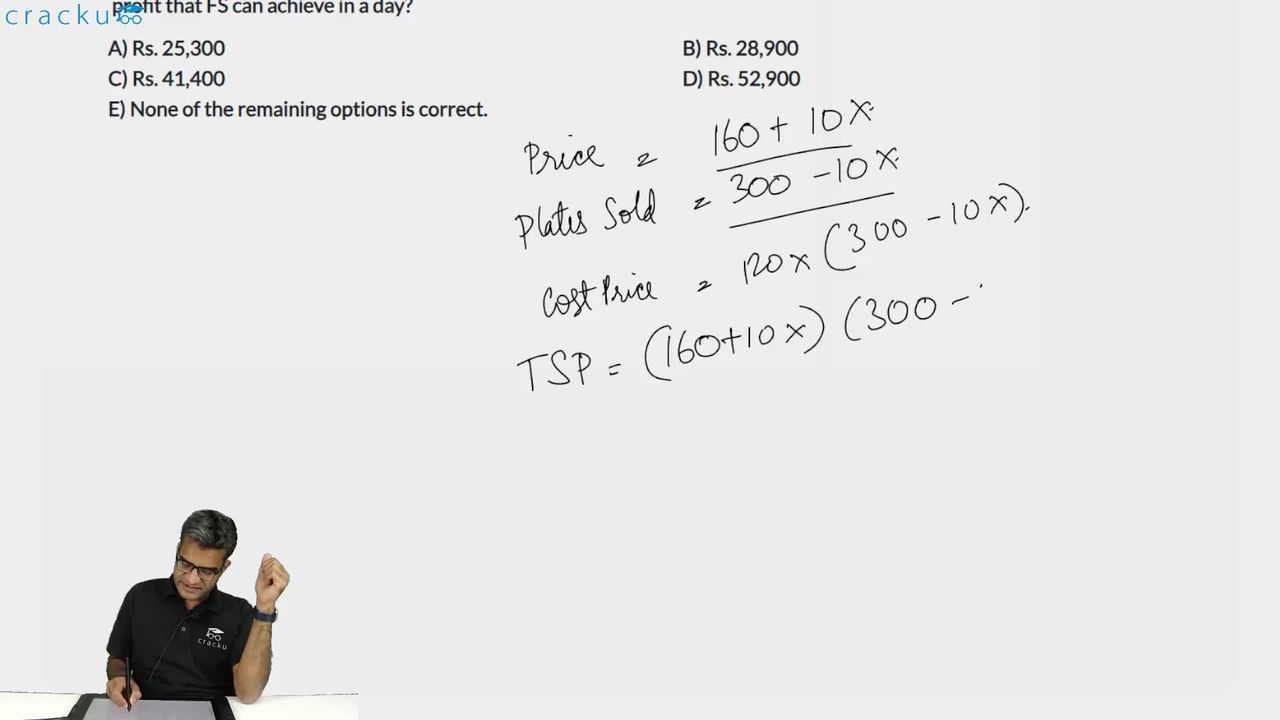FS food stall sells only chicken biryani. If FS fixes a selling price of Rs. 160 per plate, 300 plates of biriyani are sold. For each increase in the selling price by Rs. 10 per plate, 10 fewer plates are sold. Similarly, for each decrease in the selling price by Rs. 10 per plate, 10 more plates are sold. FS incurs a cost of Rs. 120 per plate of biriyani, and has decided that the selling price will never be less than the cost price. Moreover, due to capacity constraints, more than 400 plates cannot be produced in a day.
If the selling price on any given day is the same for all the plates and can only be a multiple of Rs. 10, then what is the maximum profit that FS can achieve in a day?
Given that the plate costs 120, they are selling it for 160, and the number of buyers is 300; the current profit is 40 per customer.
It is crucial to note that any increase of price by 10 will decrease the number of customers by 10, and conversely, any decrease of price will increase the number of buyers by 10.
Let's say the maximum profit is gained by increasing the profit by x times 10. In that case, the number of customers will decrease by x times 10.
The profit will be (40+10x)(300-10x); this has to be maximum.
Let's expand this expression.
(40+10x)(300-10x)=$$12000+3000x-400x-100x^2$$
$$12000+2600x-100x^2$$
This has to be maximum.
Let's multiply this expression by -1 for having positive coefficient of $$x^2$$
$$100x^2-12000-2600x=100x^2-2*130*10x+130^2= (10x-130)^2-12000-130^2$$
$$(10x-130)^2-28900$$
Before, we multiplied the expression by -1 to revert that again, multiply by -1.
The new expression is $$28900 - (10x-130)^2$$. The maximum value of this expression is 28900.
Video Solution

Create a FREE account and get:
- All Quant Formulas and shortcuts PDF
- 15 XAT previous papers with solutions PDF
- XAT Trial Classes for FREE




